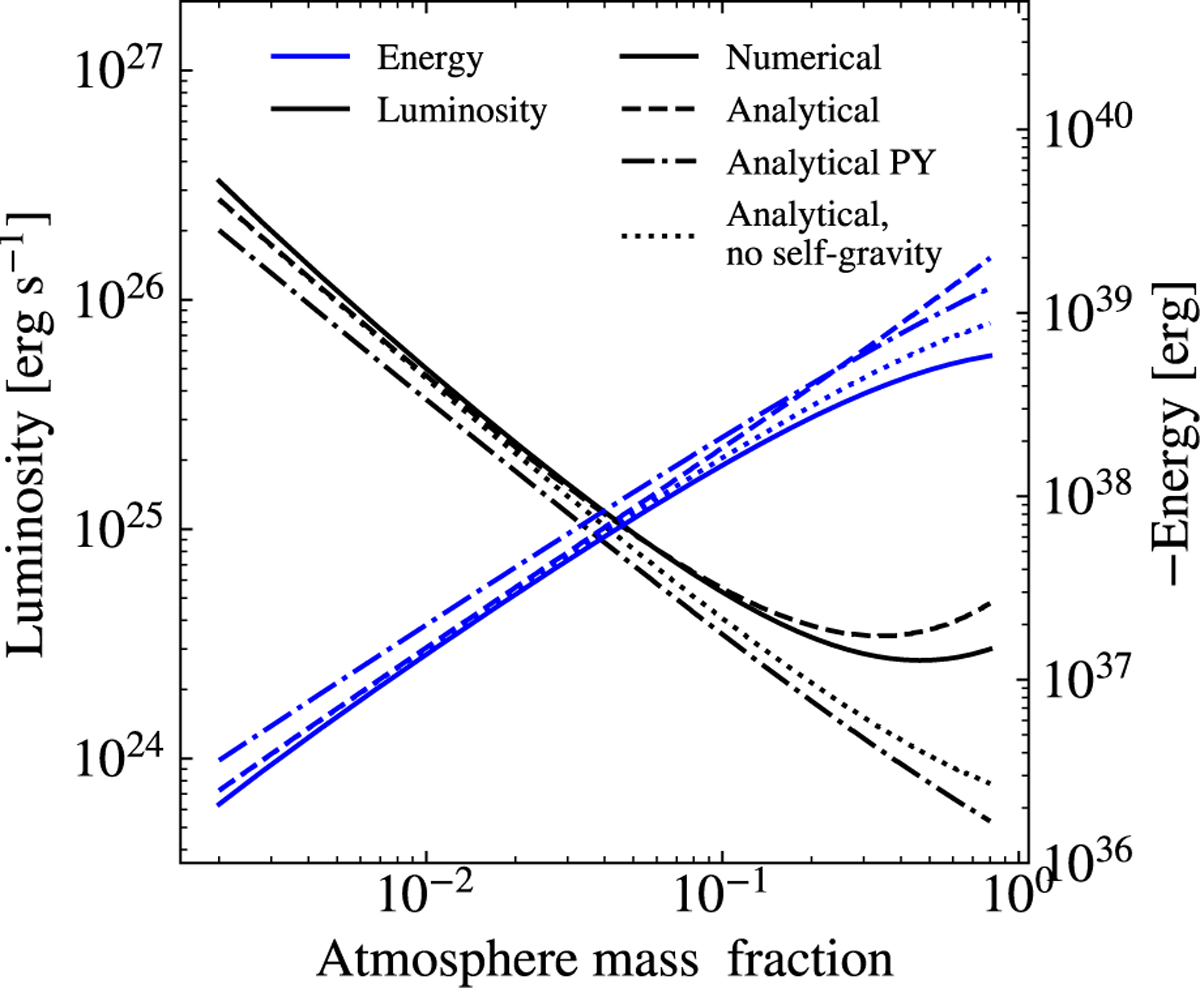Fig. 6

Download original image
Comparison of luminosity (black) and total atmospheric energy (blue) between the full numerical solution (solid) presented in Sect. 3.1 and our analytical model (dashed) for the same setup as in Fig. 4. We also show the analytical model presented by Piso & Youdin (2014), namely, their eqs. (30c) and (31) (dash-dotted), and our analytical model with no self-gravity (dotted). While the atmospheric energies are similar, by including the entire planet mass, we overestimate the effects of self-gravity, especially at higher masses. This leads to an increased luminosity at higher atmosphere masses. The analytical model in Piso & Youdin (2014), in turn, neglects self-gravity completely and thus underestimates the luminosity. Our analytical model with self-gravity turned off results in the luminosity being marginally higher than the analytical model in Piso & Youdin (2014) but with a similar shape.
Current usage metrics show cumulative count of Article Views (full-text article views including HTML views, PDF and ePub downloads, according to the available data) and Abstracts Views on Vision4Press platform.
Data correspond to usage on the plateform after 2015. The current usage metrics is available 48-96 hours after online publication and is updated daily on week days.
Initial download of the metrics may take a while.


